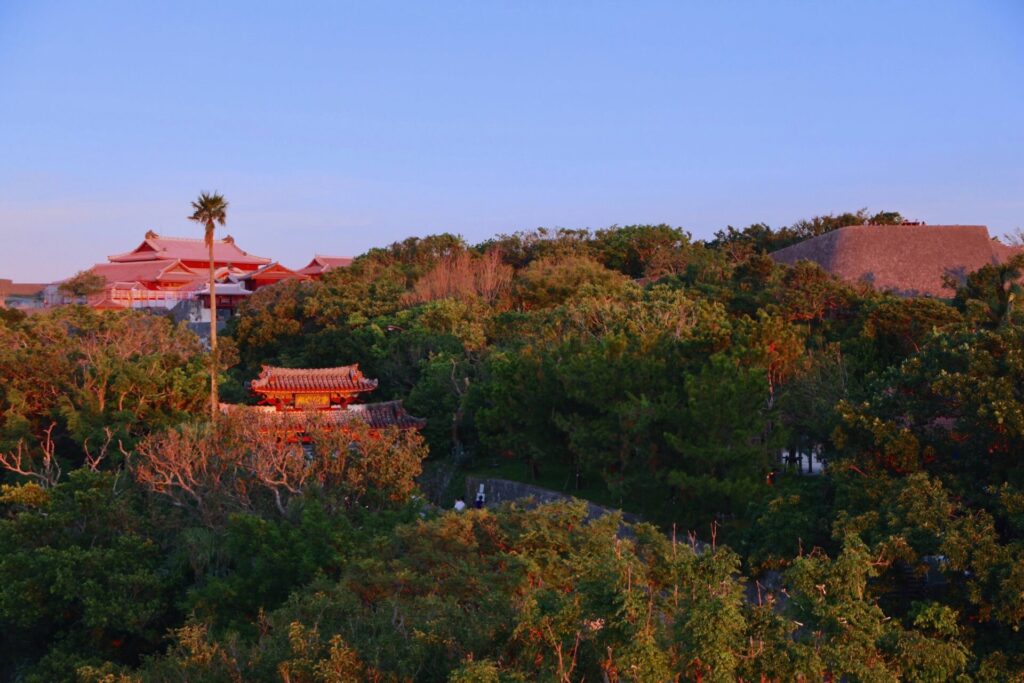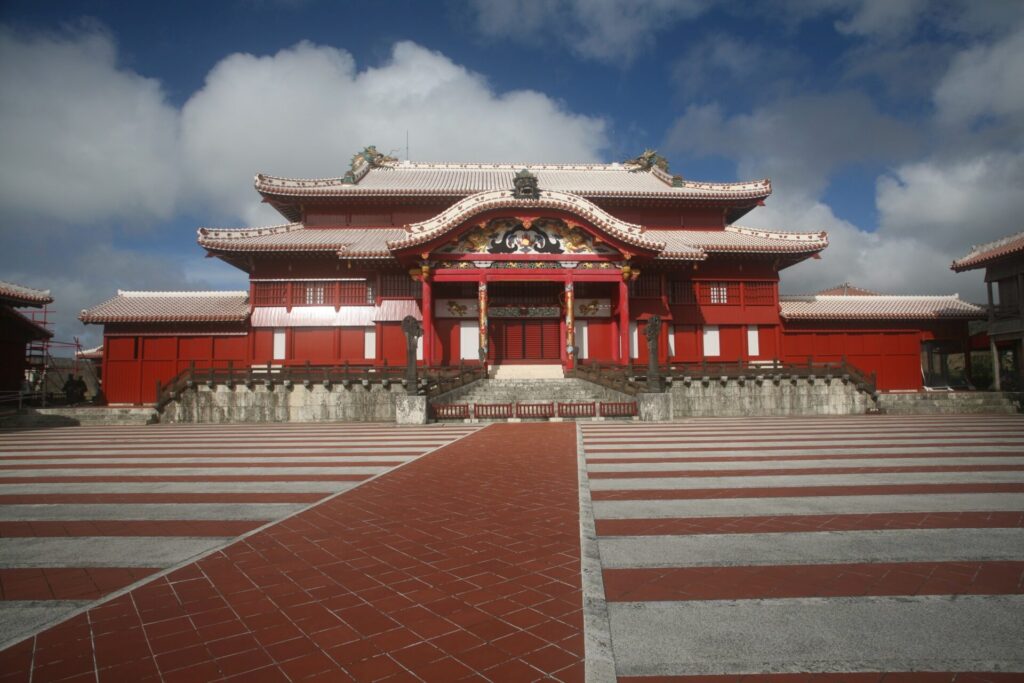Shuri Castle

A reconstruction programme is currently underway.
https://www.shurijo-fukkou.jp.e.app.hp.transer.com
Photo: TARUMI Kengo
As its name suggests, the castle is located in Shuri and used to function as the residence for successive kings of the Sho Dynasty of Ryukyu. Okinawa developed its own style of construction using Ryukyu limestone, and even today, impressive stone walls and structures can be found in many castle ruins. While the historical architecture of mainland Japan sees wood employed as the main material and stones used to support the structure, the ruins of Nakagusuku and Nakijin Castles have beautiful and grand stone structures, while the outer walls of Shuri Castle show quite elegant curves. These examples are reminiscent of those in Mycenae and Tiryns in Greece. A royal residence, constructed using wood, once stood inside the walls, and its grandeur would surely have been impressive to witness. The castle was destroyed with the comprehensive bombardment by the American military at the end of World War II, due to the Japanese army establishing its headquarters there. While it is rather thoughtless to make the most important site for the history of Ryukyu into headquarters, this will not be surprising as you learn more about Okinawa’s history.
Shuri Castle had a special significance for Okinawan people. In the Meiji period, the Sho Dynasty was abolished by the Japanese government through what was known as the Ryukyu Disposition. Yamazato Eikichi’s historic play, Shurijo Akewatashi (The Surrender of Shuri Castle), was based on the disposition and became quite popular in Okinawa at the time, which clearly shows the castle was a symbol of the independent Ryukyu Kingdom. However, it may be better to consider it as a royal palace, rather than a castle. In Ryukyu, which holds a unique place in world history as a kingdom with almost no armaments, the castle’s ten gatekeepers were what could be considered the soldiers. (The locals had a quite graceful nature. Unlike Japan’s samurai, Ryukyu’s high-class families decorated their tokonoma alcoves not with katana swords, but with musical instruments called sanshin).

Photo: TARUMI Kengo
The palace’s architecture can be considered Japanese, but it also showed strong Chinese influences, such as arranging the buildings around a central una (ceremonial forecourt). After the war, the castle’s remaining walls were paid little attention and the site was used as a campus for the Ryukyu University. The site’s restoration was advocated for even before Okinawa’s reversion to Japan in 1972, but the ground-breaking ceremony for the entire castle’s restoration wasn’t held until November 1989. Prior to the event, a ceremonial parade carried wood for the palace all the way from Kunigami, the northern-most village in mainland Okinawa.
The castle’s restoration was quite difficult as only a small number of documents and architectural plans remained. I was told that the restoration was realized in quite a cooperative way: Japanese and Okinawan specialists worked together to create the plan, and Japanese carpenters specializing in shrines and temples joined the construction. But one must keep in mind that it is only a restoration. It is surely good to have Shuri Castle back, and it will be quite a valuable tourist destination, but the restored castle is simply a full-scale model of the original. Once gone, things can never return. That is history.









































































































































































































































